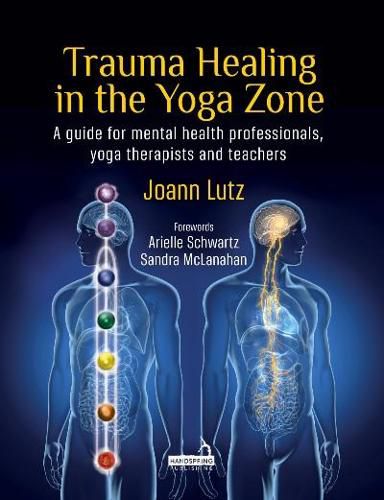Readings Newsletter
Become a Readings Member to make your shopping experience even easier.
Sign in or sign up for free!
You’re not far away from qualifying for FREE standard shipping within Australia
You’ve qualified for FREE standard shipping within Australia
The cart is loading…






Trauma Healing in the Yoga Zone describes an original model of "Nervous System Informed, Trauma-Sensitive Yoga," (NITYA), a synthesis of classical yoga, somatic psychotherapy, and neuroscience research. It is organized around the eight branches of Raja Yoga, and includes scripts for administering NITYA chair yoga postures, breathing practices, and yoga nidra (the yogic sleep). These can be used by helping professionals with all levels of familiarity with yoga.
The book is needed for several reasons: for mental health professionals, it offers a comprehensive overview of yoga philosophy and practices, as well as yoga-based options for working with the client's embodied experience, a major element in trauma healing. For yoga professionals and practitioners, it provides insight into the natural integration of yoga with polyvagal theory and other current approaches in the field of somatic psychology. Both professions are currently being enriched by data from the field of neuropsychology that describes brain function, in real time, in various mental and emotional states. This data supports yoga's effectiveness in regulating the autonomic nervous system, a key to trauma recovery.
$9.00 standard shipping within Australia
FREE standard shipping within Australia for orders over $100.00
Express & International shipping calculated at checkout
Trauma Healing in the Yoga Zone describes an original model of "Nervous System Informed, Trauma-Sensitive Yoga," (NITYA), a synthesis of classical yoga, somatic psychotherapy, and neuroscience research. It is organized around the eight branches of Raja Yoga, and includes scripts for administering NITYA chair yoga postures, breathing practices, and yoga nidra (the yogic sleep). These can be used by helping professionals with all levels of familiarity with yoga.
The book is needed for several reasons: for mental health professionals, it offers a comprehensive overview of yoga philosophy and practices, as well as yoga-based options for working with the client's embodied experience, a major element in trauma healing. For yoga professionals and practitioners, it provides insight into the natural integration of yoga with polyvagal theory and other current approaches in the field of somatic psychology. Both professions are currently being enriched by data from the field of neuropsychology that describes brain function, in real time, in various mental and emotional states. This data supports yoga's effectiveness in regulating the autonomic nervous system, a key to trauma recovery.